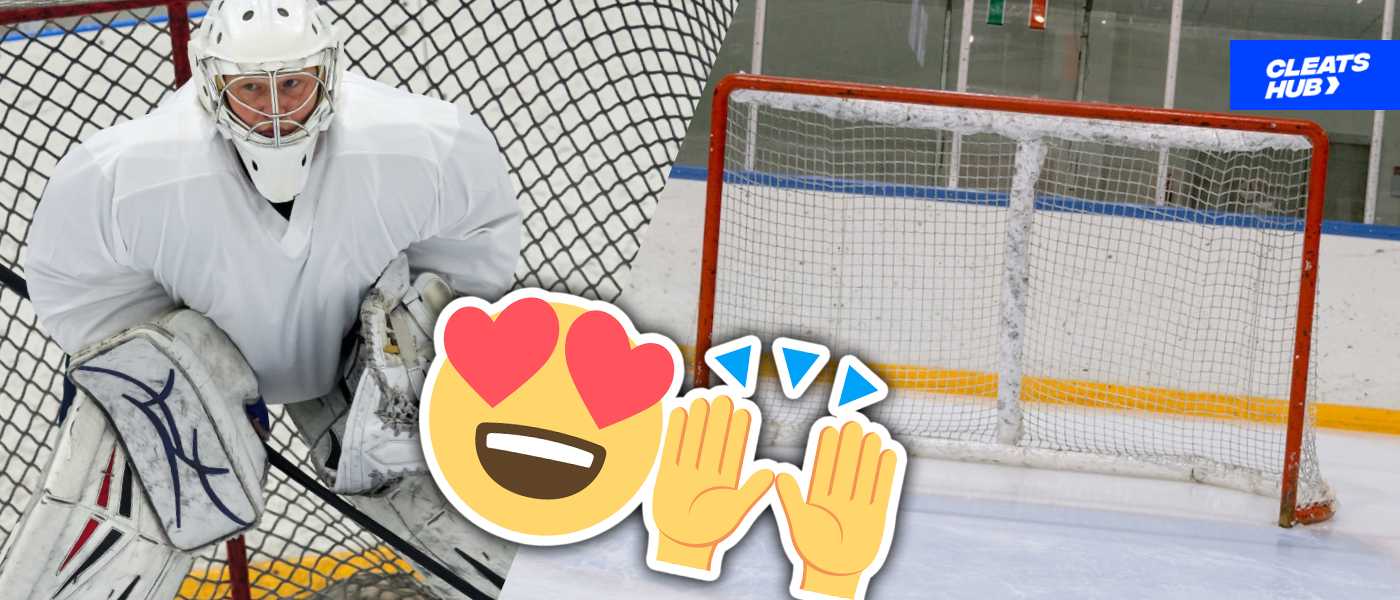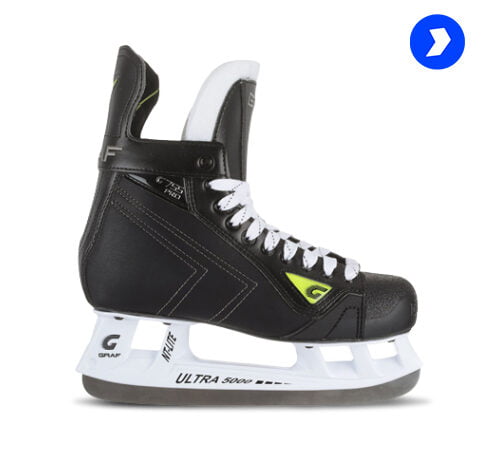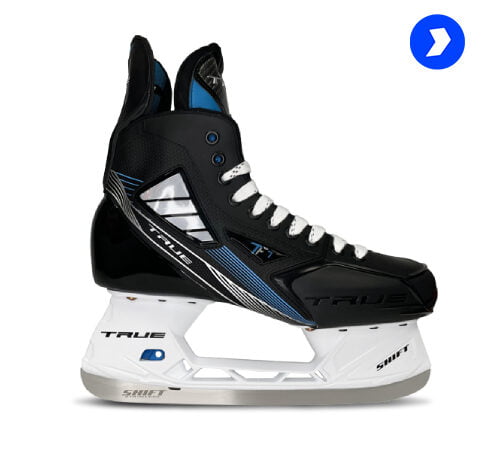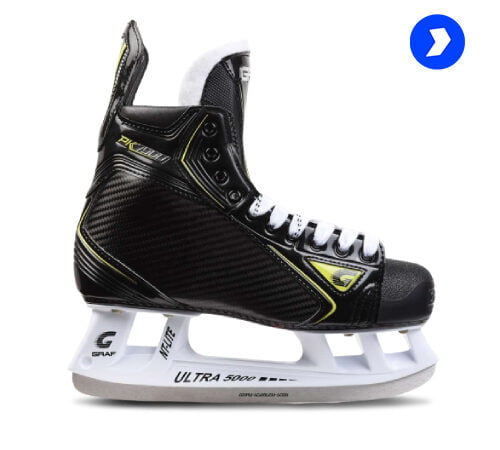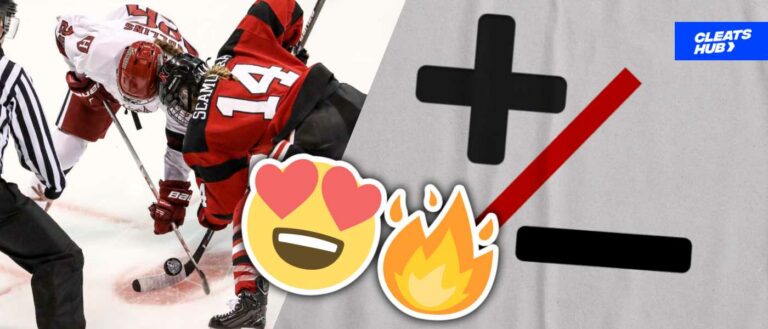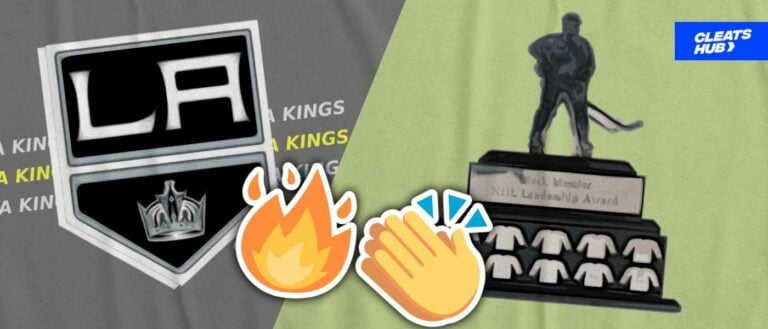What Is An Empty Net Goal In Ice Hockey?
Have you ever witnessed a hockey game where the goalie gave up on the goal, allowing the opposition to score a goal? If so, then what you just witnessed is an “Empty Net Goal”. This article will cover all you need to know either if you are new to ice hockey or just to the term “Empty Net.” Let’s start.
What Is An Empty Net Goal?
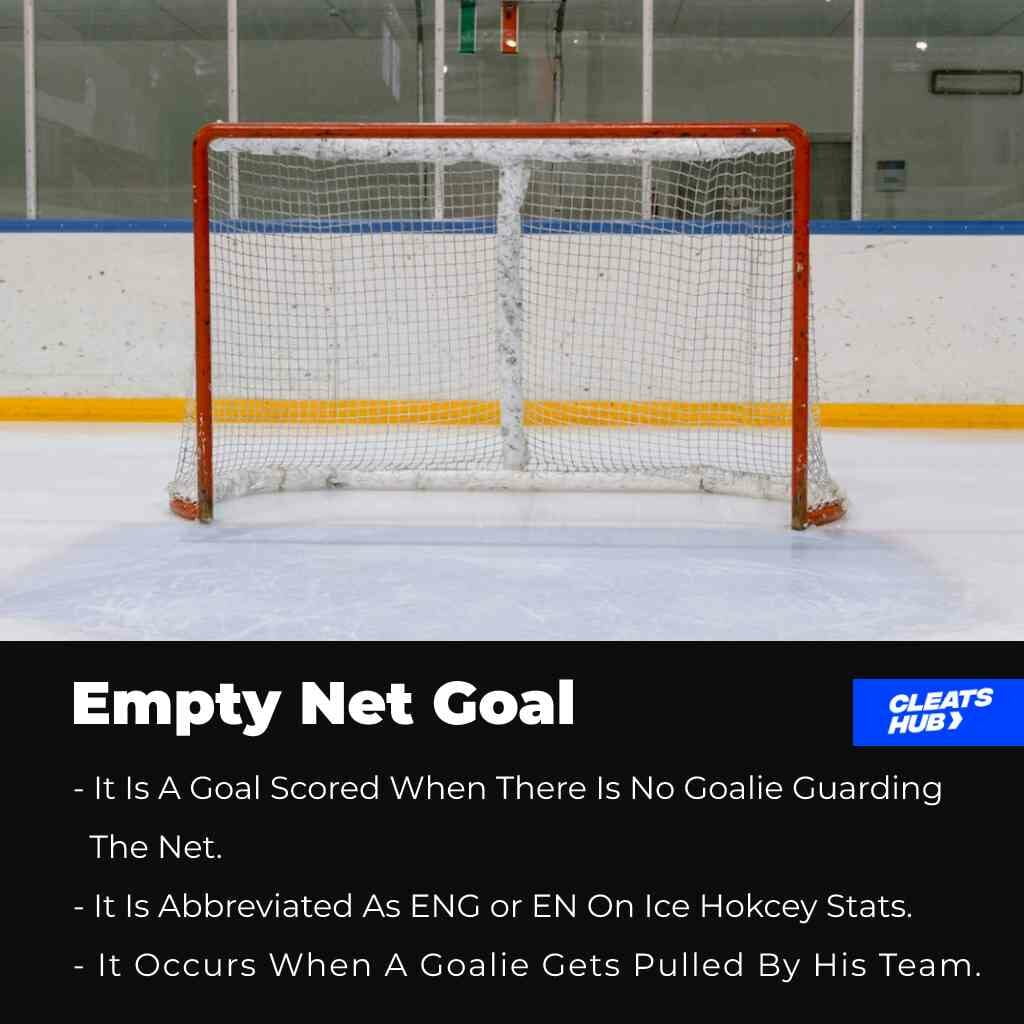
A goal is scored when the net is undefended by the goaltender. A team scores into the empty (unguarded) net when the goaltender is pulled by the other team, which is what is known as an empty goal. On hockey stats, empty net goals are denoted by the letters ENG or EN. Game aficionados jokingly refer to it as an Empty Netter.
What constitutes an empty net goal and how do you recognize one?
In order for a goal against the team to be deemed an empty net goal, the other team’s goalie must have been substituted for an additional attacker on the ice. This gives the opposition team plenty of scoring opportunities because the goaltender is no longer protecting the net.
When the goaltender is off the ice, it becomes comparatively more difficult for a team to protect the net. The job and effectiveness of a goalie cannot be substituted for by the defensemen, even though they are in position.
Hence, whenever you see a team with six skaters when a team should normally have five skaters and no goalkeeper, that goal is an empty net goal.
Pulling The Goalie
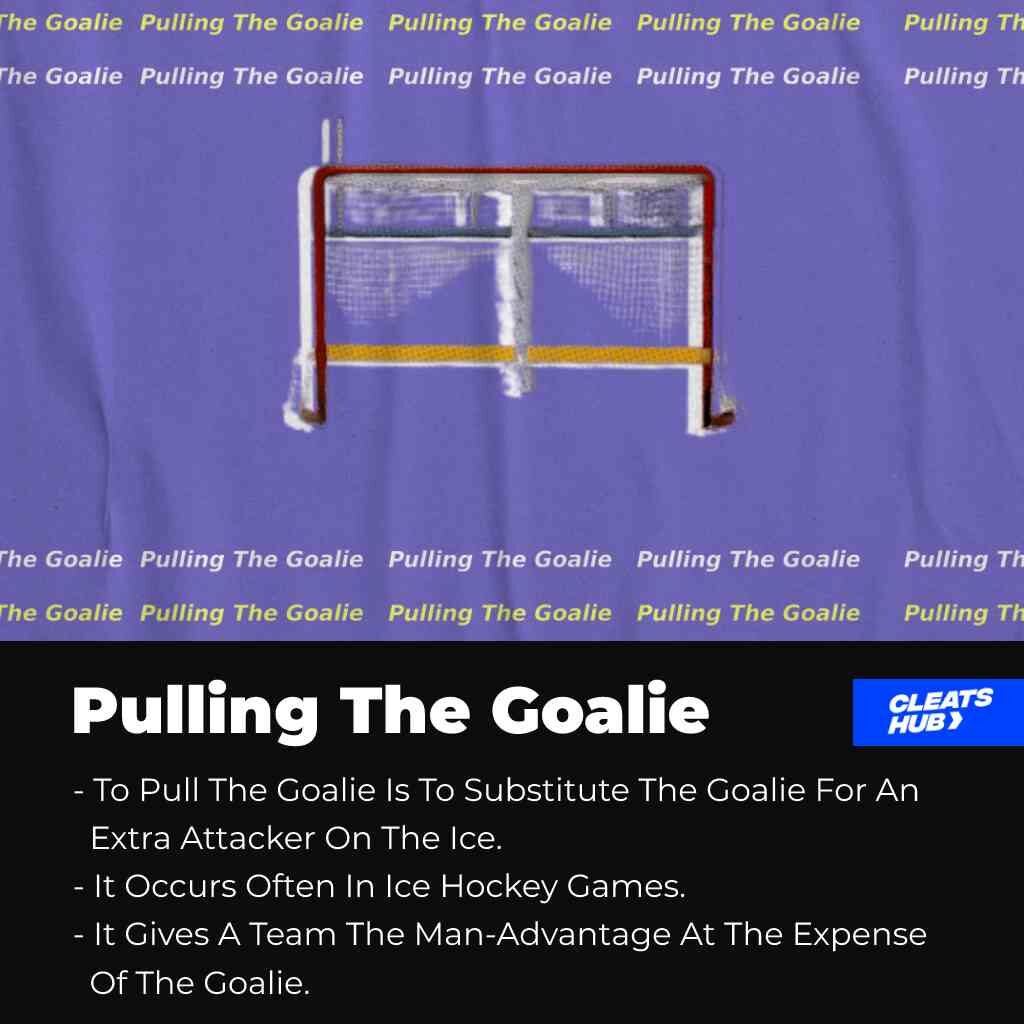
When a team pulls its goalkeeper to the bench to make room for a third skater, it is known as “Pulling the Goalie”. Ice hockey regulations, however, only permit this if the team does not have any player in the penalty box.
In ice hockey, a team is permitted to switch out its goalie for an attacker. According to the ice hockey rules, each team can only have a maximum of six players at any given moment (one goalie and five skates). A goaltender may be traded by a team for an additional player on occasion; this will be covered in more detail later. The team then has six players, all of whom are skaters, and no goaltender, giving them the advantage of having one more player.
Is Pulling A Goalie Worth It?
Is it wise to remove the goaltender even though the danger outweighs the reward? Simply put, it depends on the stakes. When a team’s coach feels that, even though the chances of winning are slim, especially in the dying seconds of a game, he can choose to pull his team’s goalie in the hopes that it will give them the advantage to at least settle for a tie.
It’s just giving up your goalie for an additional skater. A team might benefit from it and score one or two goals to tie the match. Moreover, it can backfire and result in an empty-net goal for the opposition.
On October 17, 2021, while the Nashville Predators and the California Hurricanes were playing, an incident took place. Near the end of the third period, the Predators opted to abandon their goal because they were down 1-2 in goals.
With 72 seconds remaining in the game, the Hurricanes would score an empty-net goal (1-3), and the Predators would ultimately pay the price. Later, the Predator would take advantage of having an extra attacker to score a second goal with 44.7 seconds left in the third period (2-3).
How Often Do Empty Net Goals Occur?
In ice hockey, empty-net goals happen quite frequently. There is a good likelihood that a team will pull its goalkeeper during one of the periods in every game. As a result, an empty net goal is almost unavoidable once a side pulls their goalie.
Hockey fans will occasionally see a lot of empty net goals when watching games.
Reason Why Teams Pull The Goalie

Pulling The Goalie is a high-risk decision that can be a major game changer for the team using it or backfire and end up finalizing their defeat. Even though it gives the team a man advantage by having six skaters instead of five, it also leaves a hole in the team’s net.
Now, let us look at why a team might decide to make this risky decision.
To Tie The Game
The decision to pull a goalie mostly occurs during the final minutes of the game when a team is either a goal or two goals from tying the game. During this period, a team may decide that it has a higher chance of tying the game and taking the game into overtime if it pulls its goalie for a forward.
This occurs quite often in the NHL, usually during the last two minutes of the final period. Even though it isn’t always effective, some teams get successful in scoring a game-tying goal (GTG).
Taking Advantage Of A Delayed Penalty
In ice hockey, there are times when a team commits an infraction, but the referee does not immediately call for the game to be stopped. It’s known as a Delayed Penalty. In this scenario, the non-offending side still has possession of the puck, therefore the referee rarely calls for a stoppage of play because it could strip them of a chance to score.
The result is that the referee raises his hand to signal a foul but does not blow the whistle to end play. Up until a member of the other team takes possession of the puck, play will continue. It is at this moment that a penalty is called.
The non-offending side may choose to temporarily pull their goalkeeper during the delayed penalty period because a penalty will be called immediately possession changes.
Top 10 Players With The Most Empty Net Goals
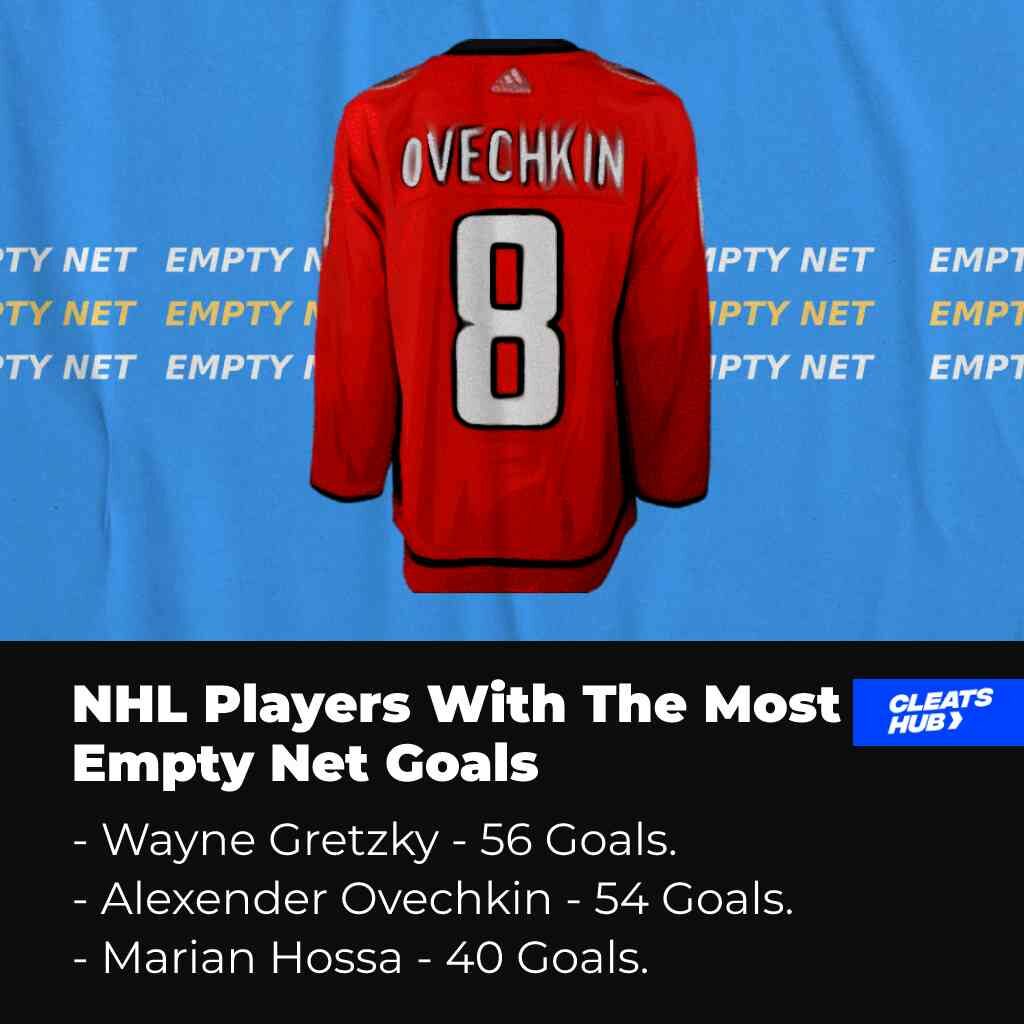
Currently, Wayne Gretzky holds the record for most empty net goals. However, Alexander Ovechkin is close to breaking that record. Whereas Gretzky is no longer playing, Ovechkin still has a lot of games before he hits the sack.
Below is a table that shows the top 10 players in the NHL with the most career empty net goals.
| Position | Name | Empty Net Goals |
| 1 | Wayne Gretzky | 56 |
| 2 | Alexander Ovechkin | 54 |
| 3 | Marian Hossa | 40 |
| 4 | Eric Staal | 33 |
| 5 | Mario Lemieux | 33 |
| 6 | Brad Marchand | 32 |
| 7 | Jarome Iginla | 32 |
| 8 | Zach Parise | 30 |
| 9 | Blaker Wheeler | 29 |
| 10 | Joe Thornton | 29 |
NHL Player With The Highest Empty Net Goal (2022-23 Season)
Jake Guentzel of the Pittsburgh Penguins stands as the player with the highest number of empty net goals during the NHL 2022-23 regular season with seven. Next to him is Alexander Ovechkin with six ENG. He is also part of the top 3 players with the most number of empty net goals during an NHL career.
| Ranking | Players | Empty Net Goals |
| 1 | Jake Guentzel | 7 |
| 2 | Alexander Ovechkin | 6 |
| 3 | Sam Reinhart | 6 |
| 4 | Kevin Fiala | 6 |
| 5 | Brandon Tanev | 5 |
| 6 | Frederick Gaudreau | 5 |
| 7 | Brandon Hagel | 5 |
| 8 | Noel Acciari | 5 |
| 9 | Blake Coleman | 4 |
| 10 | Logan Couture | 4 |
Conclusion
And now, we have come to the end of this article on what an Empty Net Goal is in ice hockey. Now that you understand what it is to pull a goalie and why ice hockey teams pull their goalie, you should better understand the game.
Also, you should understand the risk involved in pulling a goalie. With this knowledge, ice hockey games should be more fun to watch. Thanks for reading.
Psstt…. The Top Performing Cleats

